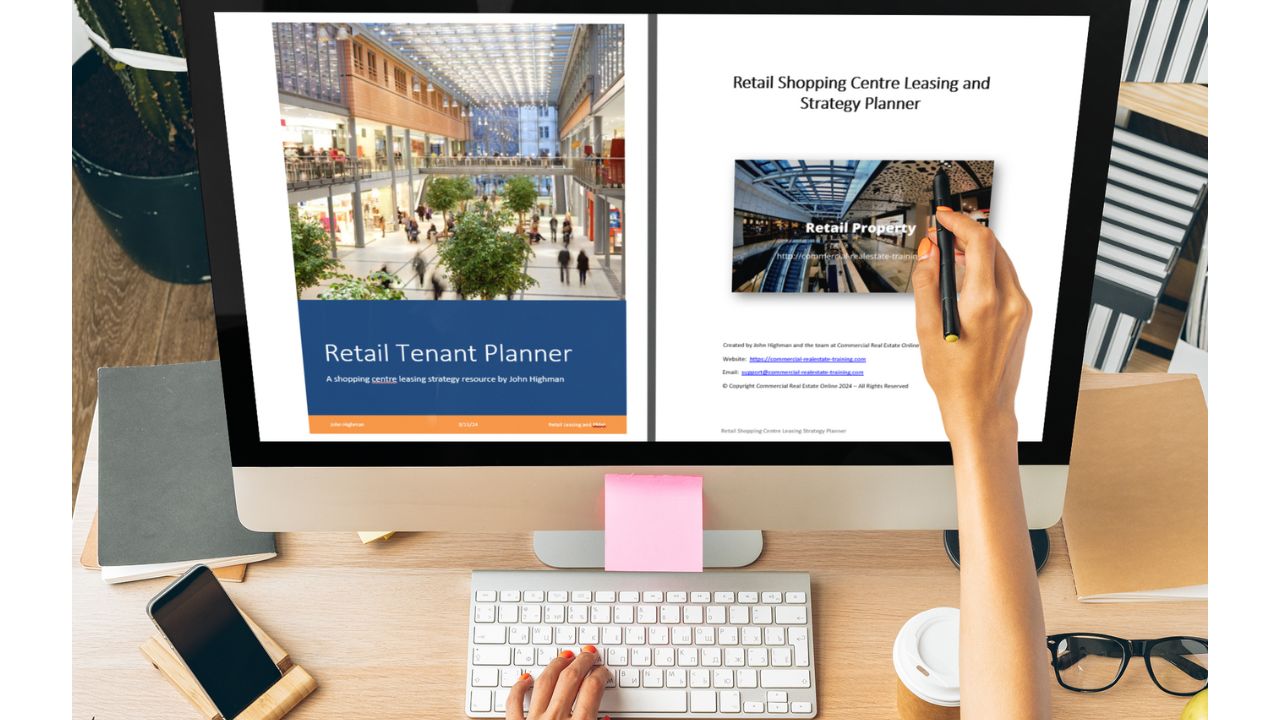Revitalising Retail: Strategic Leasing for Shopping Centre Success
A retail shopping centre is a unique investment property type that demands respect and specialisation from a sales and leasing perspective. The key people involved in retail properties are centre managers, leasing managers, landlords, and investors. They should work together on a plan when focusing on a retail property and its future.
To ensure its survival and success, it’s essential to strike a balance between the property’s management and the customers’ responses. This requires a strategic shopping centre plan that shapes and monitors the leasing and property performance potential, serving as a roadmap for your centre’s success.
A shopping centre and the retail shopping environment will change throughout the year, so be prepared for that. Here are some factors to revitalise a retail shopping centre, given key factors of activity and strategy:

Download retail property checklist here
Checklist for real estate agents in sales, leasing, or property management.
Get the fully detailed retail property and shopping centre checklist in PDF form for your ongoing reference and use in sales, leasing, or property management activity with investment properties.
1. Full Market Analysis
Understand the retail property market trends that apply in your location and for the size and type of property. There are differences between the strategies of a neighbourhood shopping centre and a more extensive regional property; the customers and tenancy mix should be carefully considered and shaped over time. How can a property attract more of the right people and retail sales?
2. Comprehensive Property Assessment
Given the property type and size, consider the retail property requirements for your location and how many other properties could compete for the same customers. What is the supply and demand for retail space today, and how is that changing? The supply and demand for retail space will impact rents, leasing periods, vacancy factors, and occupancy viability.
3. A Targeted tenant mix approach
Over time, your retail property will have vacancies for several reasons. Replacing tenants and filling vacancies should be a property-wide consideration. That is because you should curate the tenant mix to include businesses that complement each other in placement and retail offerings.
Leasing and centre managers can and should keep a ‘master list’ of potential tenants and business owners they can call when vacancies are soon to happen. That is a strategic leasing advantage.
4. attractive lease terms and conditions
Given the property market today and the shop vacancy pressures across retail, establish some ranges and guidelines about rentals required to lease premises, incentives to be offered to new tenants, and flexible lease terms given the various lease durations of years and options. The lease terms should align with the current property market to attract tenants to a property.
5. Getting the Message out
When you have a vacancy to lease, how will you communicate this to others about the shop and its availability? Effective lease marketing today involves several strategies, including online advertising, tenants from other properties, signboards, targeted tenant segments, and networking across and through the existing tenant mix.

6. Planning to help potential tenants move
Establish a plan of assistance to make it easier for new tenants to move into your property. In introducing a tenant to your property as part of a new lease, think about the support processes you can apply to make things happen effectively and directly.
That can be marketing assistance, fitout contributions, fitout construction alternatives, and plans for the property detailing services, amenities, and special leasing areas such as licenced areas, storage, and cabling. Make the shop leasing process more manageable in your retail property.
7. Success Stories are Valuable
As you introduce new tenants to your shopping centre, have a ‘tenant introduction pack’ that provides all the details about the property, the existing tenant mix, and the customer base, and share some success stories about other tenants who have managed to do things well and merge into the property without difficulty.
8. Questions are Always There
Expect questions as you lease your property or premises, and document all meetings, discussions, and decisions.
While you manage or lease retail premises, the landlord or client will be the ultimate decision maker on lease and tenant choices. Keep notes from all decisions and discussions. You never know when you will want to refer back to them.

Conclusion
Given these factors, where is the retail property or shopping centre headed? New tenants need to know what is happening in the retail property and how things will change in the coming months and years.
Don’t just lease a premises in a shopping centre. Make the whole situation work and shape the leasing choices through the negotiation and the lease documentation. That is how you become a leading expert on retail property.







